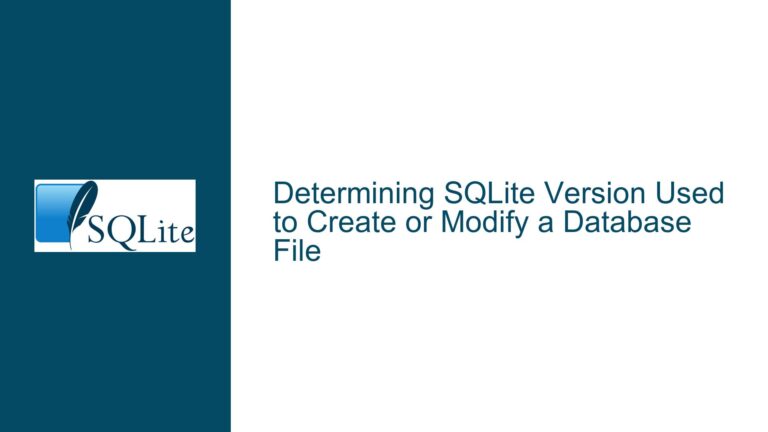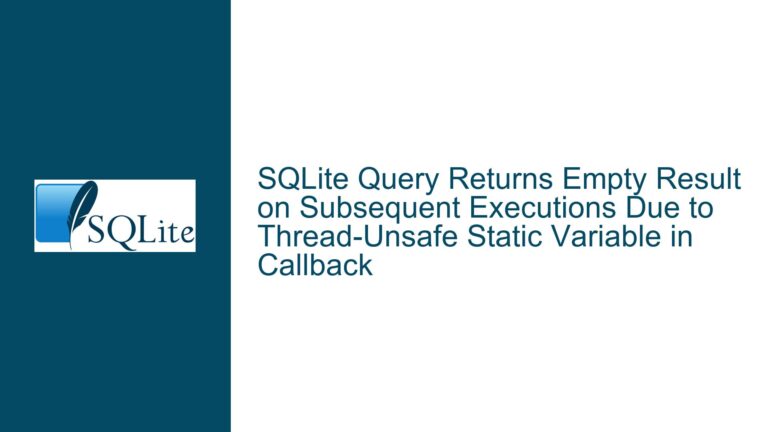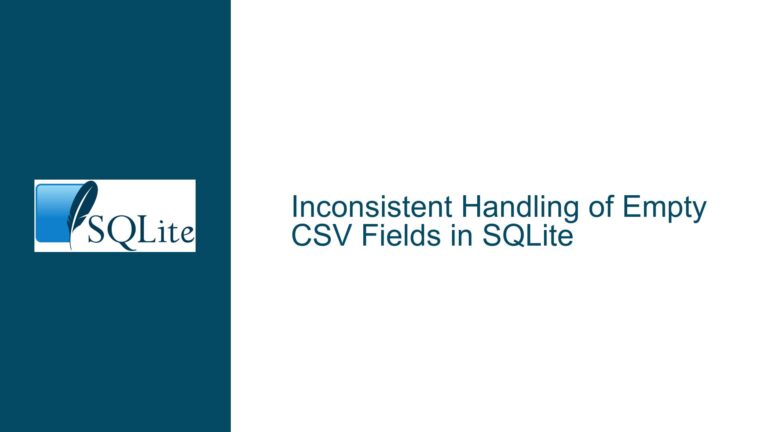Natural Language Query Assistant for SQLite: Schema Analysis and Query Generation
Schema Analysis and Query Generation in SQLite Using Natural Language
Issue Overview
The core issue revolves around the integration of natural language processing (NLP) with SQLite databases to facilitate query generation and execution. The primary goal is to enable users to interact with SQLite databases using natural language, thereby abstracting away the complexities of SQL syntax. This involves analyzing the database schema, understanding the user’s intent expressed in natural language, and generating the corresponding SQL queries. The process is facilitated by an AI model, such as ChatGPT, which interprets the natural language input and formulates the appropriate SQL commands.
The schema analysis phase is crucial as it provides the AI model with the necessary context about the database structure, including tables, columns, data types, and relationships. This information is used to generate accurate SQL queries that align with the user’s intentions. The query generation phase involves translating the natural language input into SQL syntax, ensuring that the resulting query is both syntactically correct and semantically aligned with the user’s request.
The execution phase involves running the generated SQL query against the database and returning the results to the user. This entire process must be efficient, accurate, and secure, especially when dealing with sensitive data. The integration of NLP with SQLite databases presents several challenges, including schema interpretation, natural language understanding, query optimization, and data privacy.
Possible Causes
Several factors can contribute to issues in the schema analysis and query generation process. One of the primary causes is the complexity of the database schema. A schema with numerous tables, intricate relationships, and a wide variety of data types can be challenging for the AI model to interpret accurately. Misinterpretation of the schema can lead to incorrect query generation, resulting in erroneous or incomplete results.
Another potential cause is the ambiguity in natural language input. Natural language is inherently ambiguous, and the same phrase can have multiple interpretations depending on the context. The AI model must be able to disambiguate the user’s intent and generate a query that accurately reflects their request. Failure to do so can result in queries that do not align with the user’s intentions.
The quality of the AI model also plays a significant role in the accuracy of query generation. Models with limited training data or inadequate understanding of SQL syntax may struggle to generate correct queries. Additionally, the model’s ability to handle complex queries, such as those involving joins, aggregations, and subqueries, can impact the overall effectiveness of the system.
Data privacy is another critical consideration. The system must ensure that sensitive data is not exposed during the schema analysis or query generation process. This requires careful handling of the database schema and any metadata that is sent to the AI model. Failure to protect sensitive information can lead to data breaches and compliance issues.
Troubleshooting Steps, Solutions & Fixes
To address the challenges associated with schema analysis and query generation in SQLite using natural language, several troubleshooting steps and solutions can be implemented. The first step is to ensure that the database schema is well-structured and documented. A clear and concise schema with appropriate naming conventions, data types, and relationships can significantly improve the AI model’s ability to interpret the schema accurately. Tools such as schema diagrams and documentation generators can aid in this process.
The next step is to enhance the natural language understanding capabilities of the AI model. This can be achieved by training the model on a diverse dataset that includes a wide range of natural language queries and their corresponding SQL equivalents. The training data should cover various query types, including simple selects, joins, aggregations, and subqueries. Additionally, the model should be fine-tuned to handle domain-specific terminology and context.
Query optimization is another critical aspect of the system. The generated SQL queries should be optimized for performance to ensure that they execute efficiently on the database. This can involve techniques such as indexing, query rewriting, and caching. The AI model should be capable of generating optimized queries that minimize execution time and resource usage.
Data privacy must be a top priority throughout the schema analysis and query generation process. The system should implement strict access controls and encryption to protect sensitive data. Only the necessary metadata should be sent to the AI model, and any sensitive information should be anonymized or redacted. Regular security audits and compliance checks can help ensure that the system adheres to data protection regulations.
To further improve the accuracy and reliability of the system, user feedback should be incorporated into the AI model’s training process. Users should be able to provide feedback on the generated queries, and this feedback should be used to refine the model’s understanding of natural language and SQL syntax. Continuous learning and improvement are essential for maintaining the system’s effectiveness over time.
In conclusion, the integration of natural language processing with SQLite databases offers a powerful tool for query generation and execution. However, it also presents several challenges that must be addressed to ensure accuracy, efficiency, and data privacy. By implementing the troubleshooting steps and solutions outlined above, developers can create a robust and reliable system that leverages the strengths of both natural language and SQLite.






